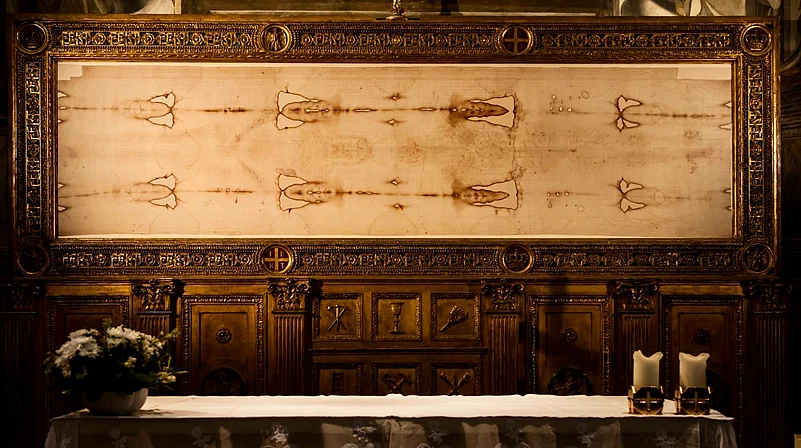A team of Italian researchers has reignited the debate about the Shroud of Turin, the ancient linen cloth that some believe was used to bury Jesus Christ. In a new study published in the journal Heritage, the researchers suggest that the Shroud might be around 2,000 years old.
The Shroud of Turin features a faint image of a man, which many believe is a miraculous imprint of Jesus' body. The latest study doesn't claim to confirm whether the Shroud belonged to Jesus, but it does suggest that its age could be consistent with the time of Jesus.
This new research challenges earlier findings that dated the Shroud to the Middle Ages. Previous studies, including a significant radiocarbon test from the late 1980s, concluded that the Shroud was created between A.D. 1260 and A.D. 1390. These results were seen as evidence that the Shroud was a medieval forgery.
The 1989 radiocarbon dating was pivotal in establishing the Shroud's medieval origin. According to historical records, the Shroud first appeared in France in the 1350s, which aligned with the radiocarbon results.
However, the Italian researchers, led by Liberato De Caro from the Institute of Crystallography, used a new method called Wide-Angle X-ray Scattering to analyze the Shroud. They tested a small sample of the linen, currently housed in the Cathedral of St. John the Baptist in Turin. Their results were "fully compatible" with another linen sample dated to A.D. 55-74, suggesting that the Shroud could indeed be 2,000 years old.
The researchers noted that their findings would only be valid if the Shroud had been kept under specific conditions—temperatures between 20-22.5°C (68-72.5°F) and relative humidity of 55-75%—for much of its history. They called for further, more detailed X-ray studies of additional samples to confirm their conclusions.



























